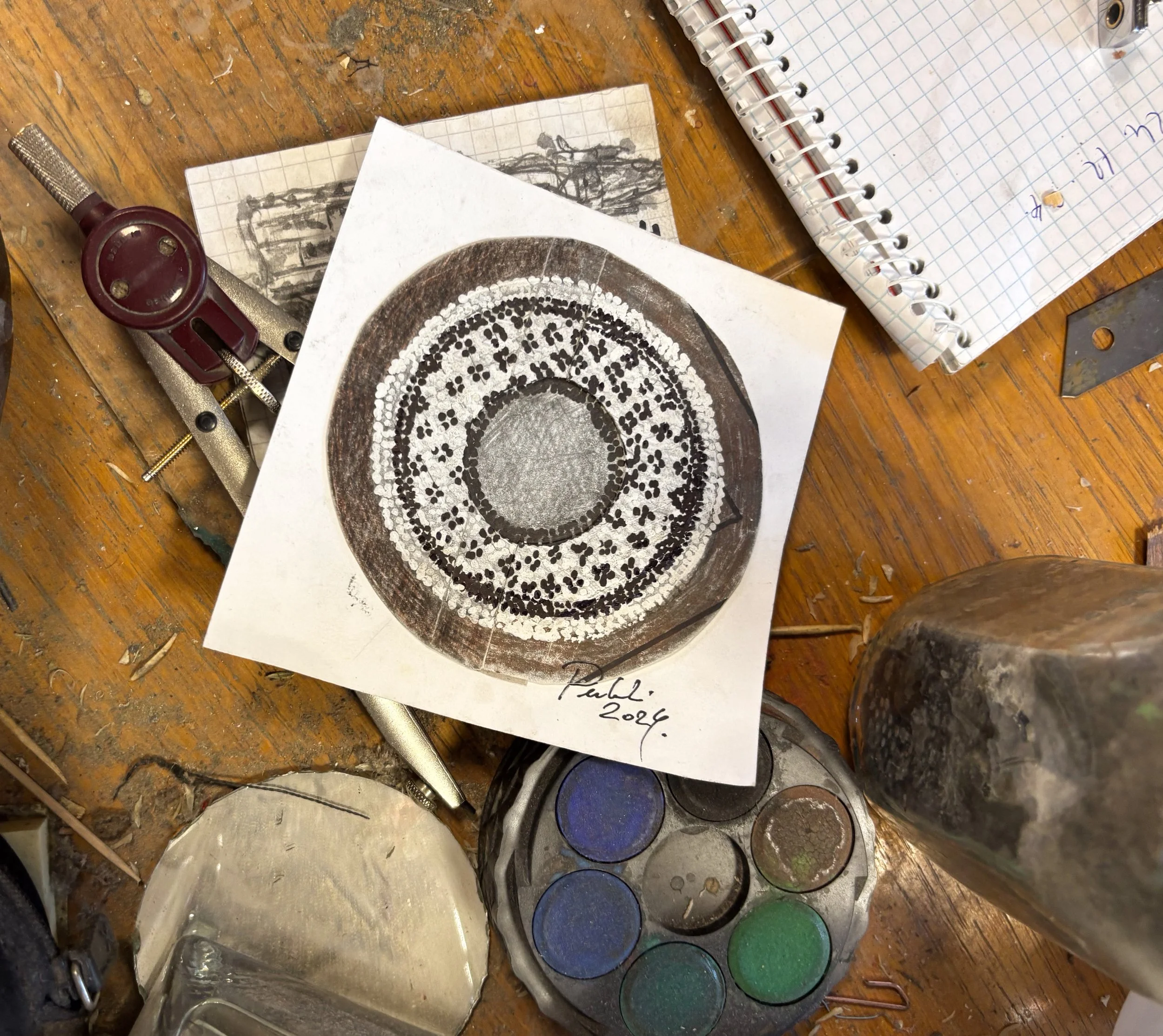From Ancient Rome to Hungary.
We marvel at their beauty in the ruins of ancient Roman villas, or on the ceiling of Byzantine basilicas.
Timeless, ethereal, mosaic seem to be designed with the purpose of transcending time.
Today, in Hungary, that age-old tradition is still alive, and as mesmerising as it once was.
Read on to learn how they’re made.
At its core, a mosaic is a collection of tiny squares of hard material whose name hasn’t changed since the Romans: tesserae, tiles.
In his Atelier, József Perlaki hand cuts every single tesserae, starting from blocks of stone, smalti or glass. A laborious process that has barely changed from the time when Byzantine craftsmen did the same for the apse of Ravenna’s Sant’Apollinare in Classe, fifteen centuries ago.
If gold is required - say, for instance, for the halo of a Saint - then József will use 24k Gold Mosaic tiles produced by famed Venetian company Orsoni, the only one still active in the island city.
Every time you look at a mosaic, every single tessera, every minuscule tile, has been manually cut to precisely the size and shape that is needed to form the bigger picture.
If the tesserae are the pixels of a mosaic, then what underpins the whole endeavour is a design.
Again, it all starts with a drawing.
The design of the mosaic will be first sketched, then drawn at scale, before being applied to the mortar base where the mosaic will be built.
Slowly, carefully, this infinite puzzle takes place.
Each tessera is cut to size and place in its proper place, held by an adhesive tape on the bottom.
Then, after countless hours of work, it’s time for grouting. Mortar is added in the minuscule gaps between each tessera, holding them in place forever.
The mosaic is then cleaned, polished and it’s ready to withstand the millennia to come.






